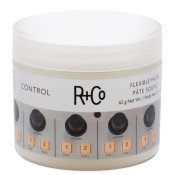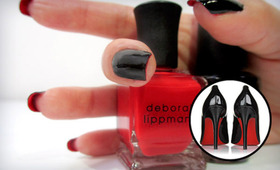The Difference Between Hair Wax and Hair Paste Explained
Published Aug 16, 2022

Short hair doesn’t exactly equate to easier styling methods. With pomades, gels, powders, and more, it’s hard to know where to turn and what it all means. Especially when the distinctions between most styling products are fuzzy at best.
One of the most hair-knotting choices: deciding between hair wax and paste. These similar stylers both offer malleable hold with just a pea-sized amount of product. So, what’s the diff?
Sometimes you may be able to pick up on the differences between paste and wax, and other times, it can seem like a toss up. The popular products also have a range of variations and results respectively depending on formulas. Confusing? Definitely.
To help you navigate, we’re breaking down the most common similarities and differences between these products, so you can find the best option for flexible, airy definition.
What is wax and paste?
Similarity:
Unlike their slick gel and glossy pomade counterparts, hair wax and paste are non-greasy grooming aids that mold hair, add texture and definition, and impart volume typically with a matte finish. Because they don’t dry hard, both yield reworkable, soft-touch styles that evolve throughout the day.
Difference:
Waxes tend to be more lightweight, creating airy, buildable texture. Pastes can be thicker and creamier in consistency. While each paste and wax formula varies with both being versatile for all hair lengths and textures, wax is often times better for fine hair in need of extra volume. Weightier pastes are more suitable for wavy and curly hair from short to mid-lengths, offering more movement and definition.

Best uses
Similarity:
By nature waxes and pastes keep hair in place with just a little bit of product going a long way. Both stylers can help you achieve softness, separation, and a chic version of bed head.
Difference:
Some waxes will hold your style for longer compared with paste, especially if you layer the product and seal down flyaways. Count on your hair to stay firmly shaped without the crispy, wet look characteristic of gels. However, you can still run your hands through to rework your strands–it’s that flexible. Waxes offer a matte finish, but can also add luster that ranges from a light sheen to noticeable shine.
Pastes, on the other hand, offer a your-hair-but-better effect. Typically, it’s a looser, more malleable hold with a formula that’s wetter than wax, yielding a natural to low shine finish. The result is soft to touch and pliable usually with an added moisture component.
How to style
Similarity:
The best way to style with waxes and pastes is to pick up a dime-sized amount and emulsify it in between your palms. Make sure that there are no clumps (which would show up in your hair) by rubbing together your palms until you feel a smooth, thin layer of product. Then, disperse it evenly to damp or dry hair.
Difference:
As mentioned, wax can be layered during the initial styling phase and paste can be added throughout the day if needed. If you have short hair, work the wax into your roots and style accordingly. Longer lengths should first smooth the wax onto the surface of the hair to completely coat it. Then, work your fingers through the strands using sweeping motions to style. For a stronger hold, smooth down flyaways with additional wax or use a spray-on formula to seal in the look. For paste, finger comb the product through hair, tousling strands from back to front and front to back for an undone look that allows hair to take on its natural texture.


















